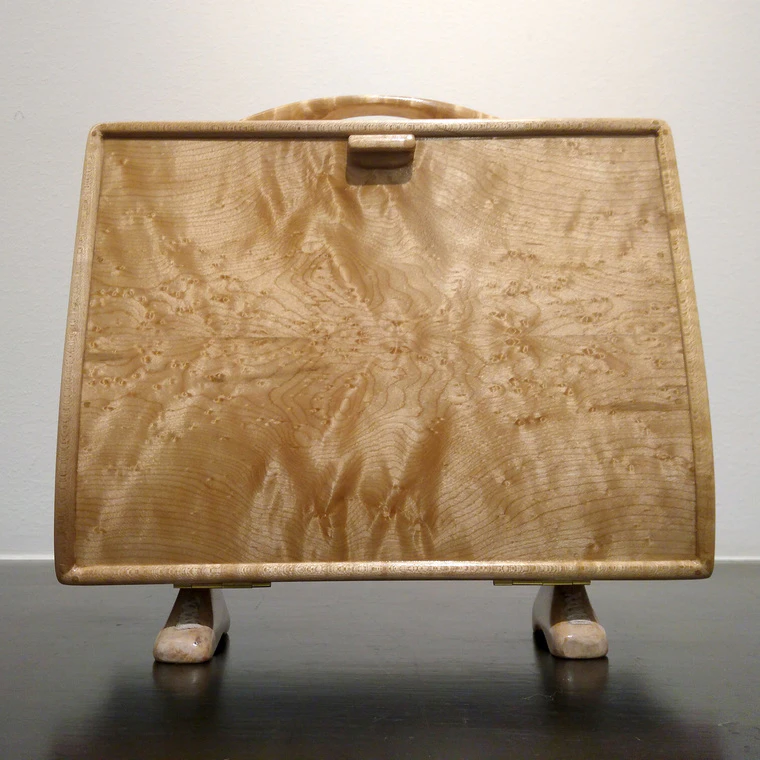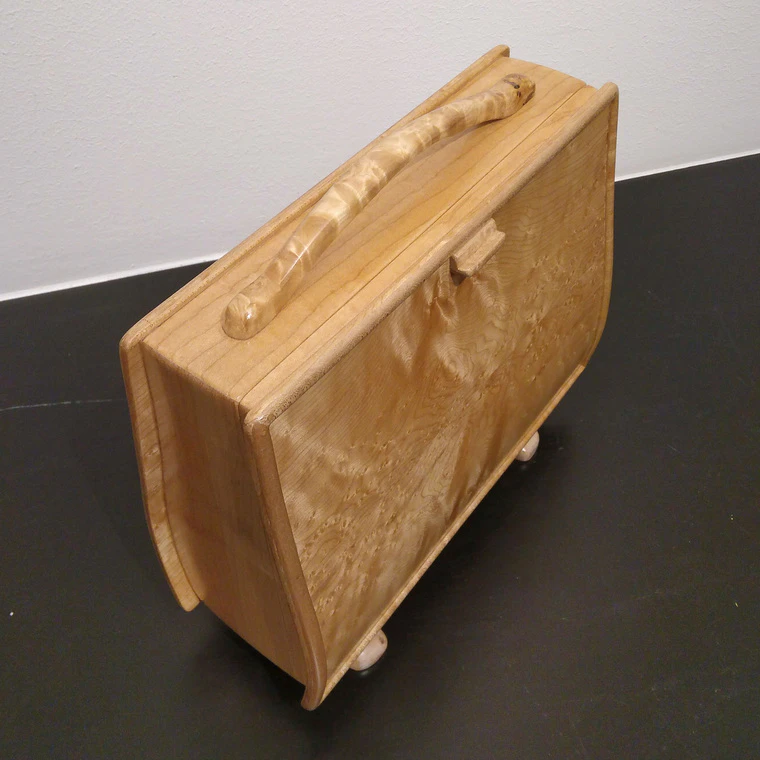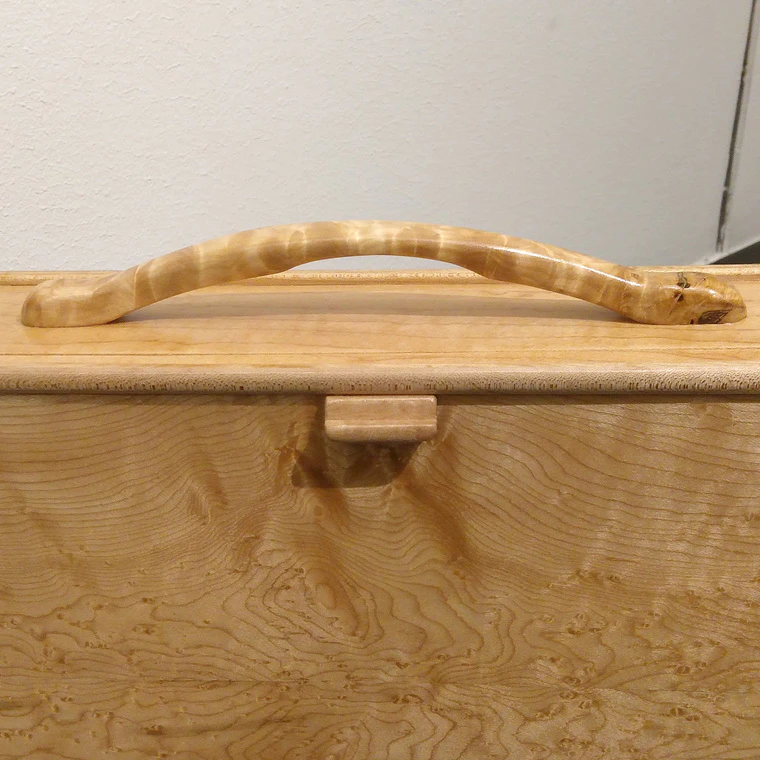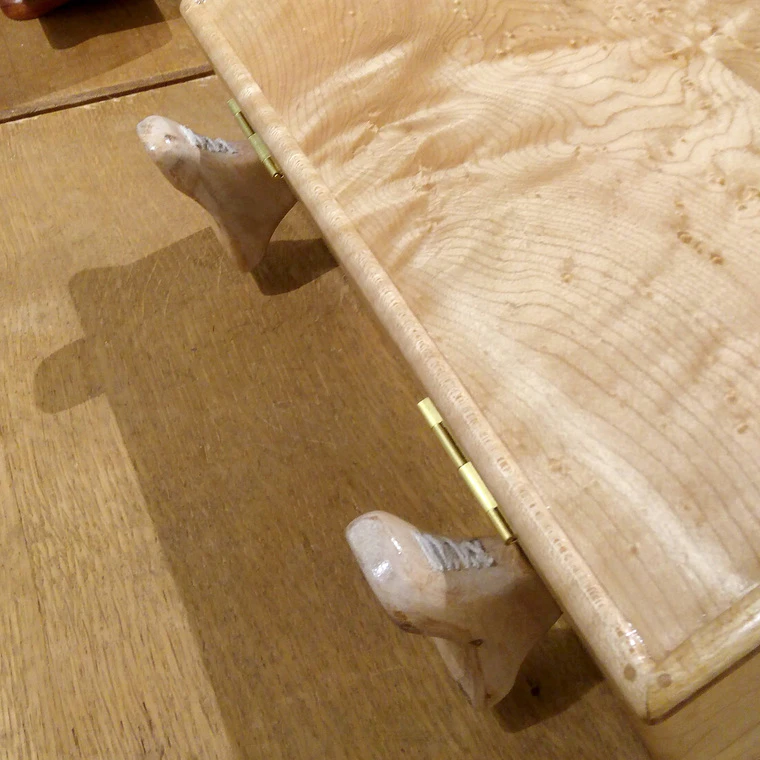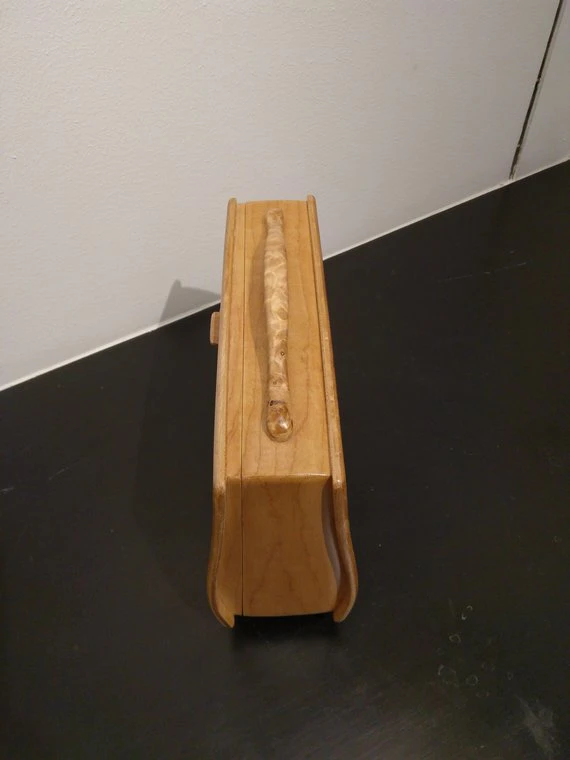Bird's Eye Maple clutch bag
H 23 x W 24 x D 9.5 cm,Year.2019Katsuyuki Okada
1943 -- Wood and Bamboo
- Price Range Please Inquire
About the Artwork
Bird's eye maple wood is not just a regular maple wood.
It is said to be a top quality maple wood and is used mainly for luxury furniture and musical instruments.
While using such top quality wood, the design of this bag is a little casual as it resembles a stylish lady of the Taisho period.
This wood was specially named bird's eye maple after its wood grain patterns. It is a hard maple wood with especially clear and beautiful wood grain. The wood grain mentioned here is not just regular wood grain, but very rare, beautiful and valuable wood grain.
There are various rare wood grains such as bird's eye, fiddleback, burl, silver grain etc. which are all highly valued both in Japan and overseas.
Hard maple is also called sugar maple or black maple. Both of these names sound delicious, don't they?
I made two bird's eye maple bags, but this one is white overall with a modest design.
The design is chic, but by using amber-like wood grain for the handle, I was able to make the bag look mature and sophisticated.
As I used traditional wood joinery techniques, I did not use any nails or metal parts except for the hinges and latch. I slightly colored the feet, but no colors have been added to the other parts.
Description
-
CategoryWood and Bamboo
-
MaterialsBirdseye maple
-
DimensionsH 23 x W 24 x D 9.5 cm
-
Year presented2019
-
InstructionsAs a transparent coating is applied, this bag is waterproof.
However, please avoid sudden heat (placing under the heater, near a hot kettle or iron kettle etc.) or use of sharp blades, hammers etc. as this may cause damage to the wooden body. Please also avoid nail polish and other chemicals as this may cause the coating to peel off.
Please be aware that wood expands and shrinks depending on where it is used as it absorbs and releases moisture even after being processed. For example, even by moving the bag among nearby regions in western Japan, a distortion may occur as the humidity is different.
The distortion is very small, but this may cause a slight defect.
Please be aware of this as it is the nature of wood.
Please feel free to contact me if you have any questions.
Techniques Used
Wood joinery
In wood joinery (sashimono), wood boards are cut into panels with care to how the grain patterns will fit together in the final piece. The wooden panels are then cut or carved to create interlocking joints. These joints, which are the key feature of wood joinery, make it possible to connect boards at right angles to produce boxes and other articles. Wood joinery is assembled without the use of nails or any other metal hardware.
Please feel free to contact us to commission work, check artworks available for purchase etc.

